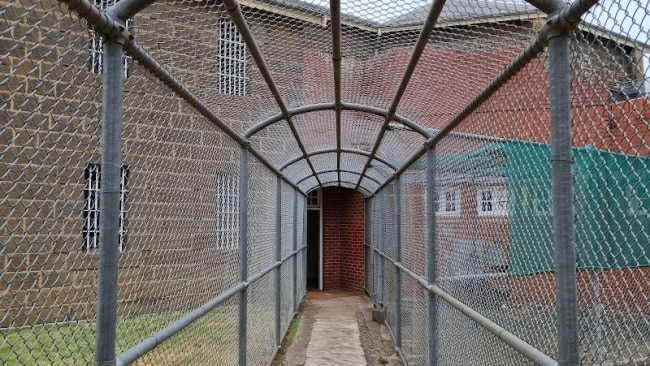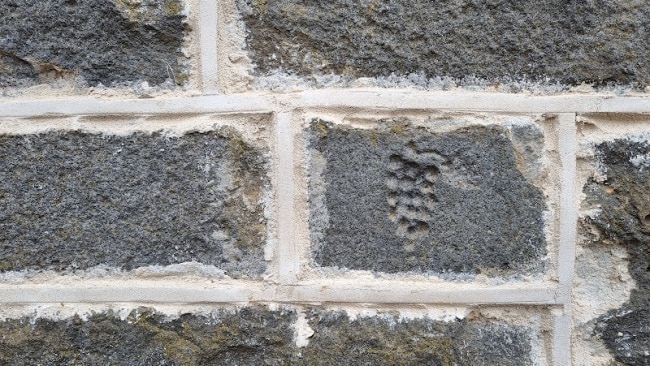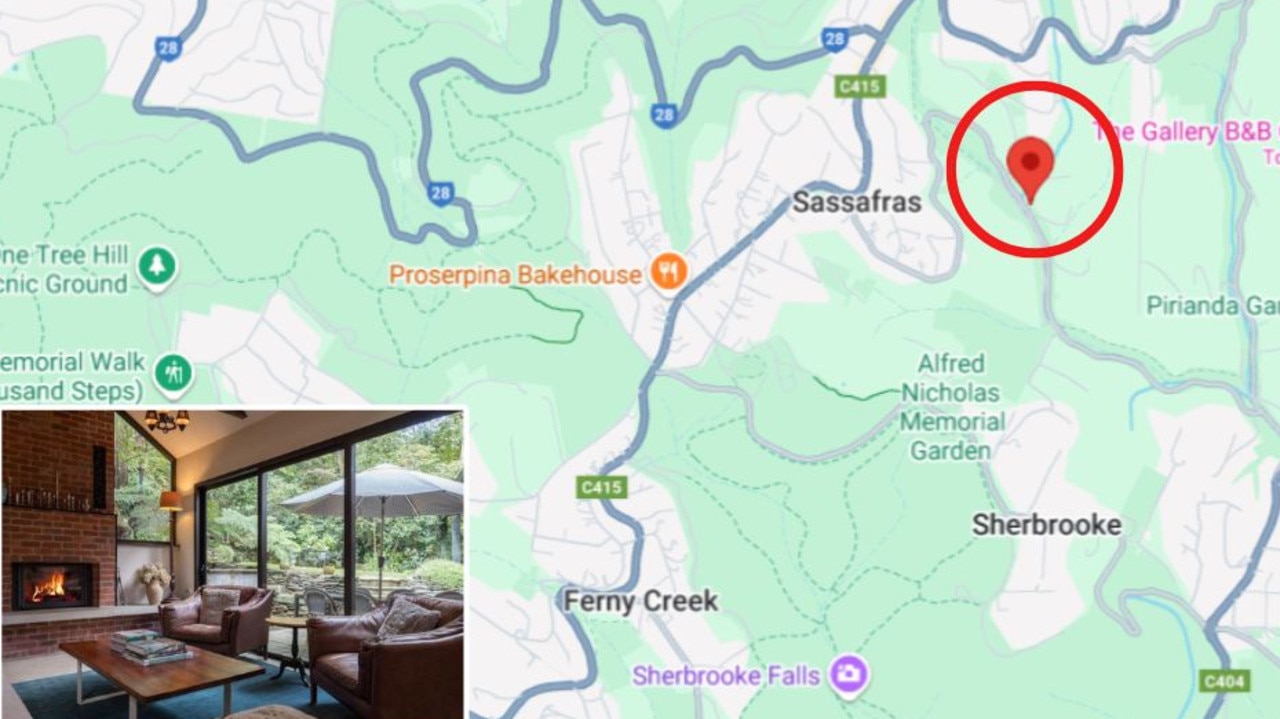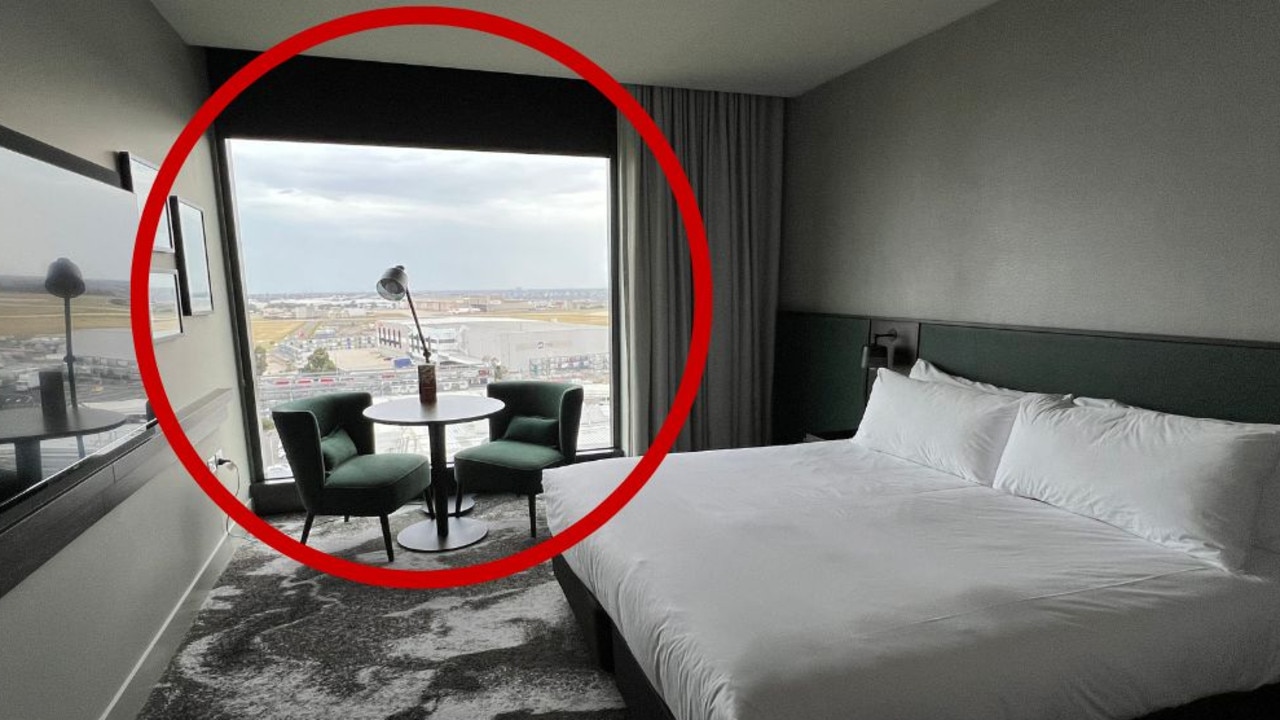Inside the chilling corridors of J-Ward, a prison for the criminally insane
The haunting history of this abandoned prison for the criminally insane will make your skin prickle.

The towering bluestone walls of J-Ward seem to suck the warmth from the air.
Set on a hill at Ararat, in western Victoria, they held some of the state’s most violent and terrifying prisoners. Some were rehabilitated. Some were moved. Others never left its bleak perimeter.
Men like William Watson Carr, a former coal miner who fell in love with Margaretta Williams, the girl next door. He brutally murdered her when she told him their engagement was over, slitting her throat with a knife. Men like Bill Wallace, who abruptly shot and killed a man in a fit of rage merely because he objected to the victim lighting up a cigarette inside a Melbourne cafe.
Or Robert Peter Tait, a man who suffered a severe head injury as a child and whose behaviour became increasingly erratic and extreme over time. His wife left him after enduring countless drunken beatings and he later horrifically beat a frail 82-year-old woman to death.
- This week Ararat was named in Escape’s top 100 Australian small towns list (you can see the full list here). The list provides plenty of inspiration for anyone dreaming of a road trip to explore our backyard this year - which is increasingly appealing as the cost of living crisis hits.
J-Ward was a prison for the criminally insane, a place for people who couldn’t be managed any other way - not in regular hospitals, not in regular jails, and certainly not in the community. It was built in 1887 as a ward of Aradale, the nearby ‘lunatic asylum’ (as they were called at the time), and while it was progressive for its time, its haunting history makes your skin prickle.

The stories, told on placards in the cells, are endlessly confronting.
It was home to Charles Foussard, a Frenchman, who served the longest incarceration in the world from the tender age of 21 until his death aged 92, for shooting and killing a man. The medical officer at his trial reported he was of "unsound mind" and had been experiencing delusions.
There was Pierre Hammond, who came to Australia in 1956 as a chef for the French Olympic team is still notorious for being the most violent man ever housed inside, with a penchant for smashing up his wooden bed frame and trying to kill anyone who entered his room. (He was also known for smoking cigarettes and then eating the butts, and eventually died from cancer.)
And then there was George Leondieu, a homophobe who murdered a man after being propositioned in a public toilet and later lost an eye in a prison fight. He was renowned for throwing violent tantrums and believed he knew Princess Margaret, the Queen’s sister. He wrote to her every single week asking her to organise his release from prison - although strangely enough, Her Royal Highness never deigned to pen a response to his pleas.

Even Chopper Read, the infamous convicted criminal and gang member, made an appearance. He was briefly admitted to J-Ward after arranging for a fellow prisoner to cut off his ears while imprisoned at Pentridge, the maximum security men’s prison in Melbourne’s northern suburbs.
The early days were savage. A mattress would be dragged into the floor of the central passage, where patients would be forcibly pinned down and subjected to painful electro-convulsive therapy. Those at risk of self-harm would be restrained in smocks with the sleeves sewn to the pockets.

The gallows were front and centre in the main prison block, hanging over the heads of the patients as a confronting and constant reminder of the seriousness of their predicaments. To this day, the Death Cell, where doomed prisoners spent their last night, makes your lungs constrict.
Three men were executed and buried onsite: Andrew Vair, who shot his former boss with a double-barrel shotgun; Robert Francis Burns, who was convicted of murder only through circumstantial evidence; and Henry Morgan, for the murder a 10-year-old girl.
They were buried upright within the prison walls, with no coffins, to ensure they could never rest.

Legend has it that when the weather is cold enough for a frost, there are three clear circles on the ground inside the wall, neatly lined up in a row about metre each in diameter, that never freeze. Even on a sunny day, something about it makes uncomfortable tingles run down your spine.
In other ways, however, it was progressive. J-Ward was one of Australia’s first Pentonville prisons, a design in which wings radiate from a central hall to promote safety and order. It was one of the first places in Victoria to ban hangings. The kitchen was very modern for its time and even had hot and cold running water, which was the envy of many of the richest local farmers.

The psychiatric side of things is equally fascinating as the tour progresses. In the 1950s, J-Ward was subject to major reforms under the leadership of Dr Eric Cunningham Dax, who lambasted Victoria’s mental hospitals as being “in a deplorable state of neglect and disrepair”. He made huge inroads for the treatment and welfare of mental health patients in the prison system.

Tour guides theorise that many of J-Ward’s stories could be explained as science developed: acquired brain injuries, depression, schizophrenia, personality disorders, and more.
There's no doubt that a tremendous amount changed by the time the mighty doors closed in 1991. However, its history as a house of horrors, and the violence that occurred inside its walls, is undeniable. So is the flash of anxiety that grips your chest as you cross the threshold.

J-Ward is located about 2.5 hours west of Melbourne and tours operate daily, which can be booked through the Friends of J-Ward and Klook websites. While you’re in town, it’s well worth adding a tour inside the cavernous walls of the Aradale Lunatic Asylum - but that’s a story for another day.
See also:
- Creepy story behind this Japanese doll
- Explore these abandoned places around the world
- 10 eerie tourist spots now unrecognisable
- 13 scary destinations for horror movie lovers
Originally published as Inside the chilling corridors of J-Ward, a prison for the criminally insane




